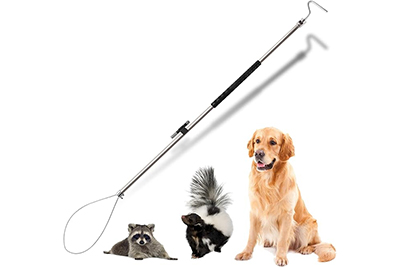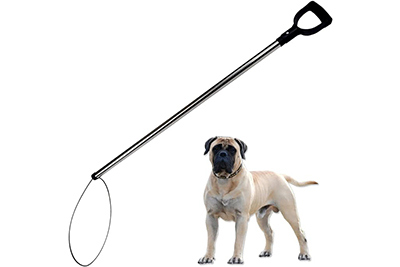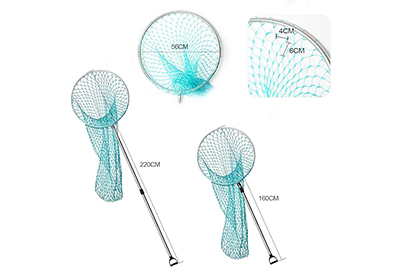From:https://www.catchingdeer.com/news/31.html
Click:325
Time:2023-10-07
Animal control professionals understand the paramount importance of ensuring animal safety while effectively managing and restraining them. Key tools in their arsenal are animal control poles and catch poles. These specialized animal control tools play a vital role in safeguarding animals and handlers alike. This article explores the significance and usage of animal control poles and catch poles in promoting animal safety during handling and restraint.

1. Understanding Animal Control Poles and Catch Poles:
Animal control poles, also referred to as catch poles, are indispensable tools used by animal control officers, wildlife rescuers, and veterinary staff. These poles are designed to safely capture and restrain animals without causing harm or undue stress. Animal control poles feature a long handle, typically made of durable materials like aluminum or fiberglass, and a cable or loop mechanism at one end.
2. Purpose and Applications of Animal Control Tools:
Animal control poles and catch poles serve several essential purposes in the field of animal management. They are particularly useful in situations involving aggressive, frightened, or potentially dangerous animals. By providing a safe distance between the handler and the animal, these tools minimize the risk of injury or harm to both parties.

Animal control poles and catch poles find application in various scenarios, including:
a. Capturing Stray or Injured Animals:
Animal control officers often encounter situations where they need to capture stray or injured animals to ensure their safety and the well-being of the public. Animal control poles and catch poles allow officers to secure the animal from a distance, reducing the risk of bites or scratches. The tools provide a humane method of control while prioritizing animal safety.
b. Handling Wildlife:
Wildlife management and conservation efforts frequently require the safe handling and relocation of wild animals. Animal control poles and catch poles enable professionals to handle wildlife without causing undue stress or harm to the animals or themselves. By maintaining a safe distance, handlers can minimize the likelihood of provoking defensive behavior from the animals.
c. Veterinary Procedures:
Within veterinary settings, animal control poles and catch poles play a role in restraining animals during medical examinations, vaccinations, or minor procedures. These tools provide a secure and controlled environment that protects both the animal and the veterinary staff. By ensuring animal safety during procedures, the veterinary team can provide necessary care while minimizing stress or potential harm.
3. Promoting Animal Safety:
Animal safety is paramount when utilizing animal control poles and catch poles. By incorporating the following considerations, handlers can enhance the safety of animals during handling and restraint:
a. Proper Training and Experience:
Handlers must receive comprehensive training in the correct usage of animal control poles and catch poles. Understanding animal behavior, appropriate handling techniques, and the limitations of the tools is essential to ensure the well-being of the animal and the safety of the handler. Regular training updates help maintain proficiency and promote safety.
b. Calm and Gentle Approach:
When approaching an animal, it is crucial to remain calm and approach with a gentle demeanor. Sudden movements or aggressive behavior can escalate the animal's stress levels and increase the risk of injury. A calm and patient approach promotes trust and cooperation, facilitating safer handling.
c. Ensuring Proper Fit and Adjustment:
Animal control poles and catch poles should be adjusted to fit the animal securely, without causing discomfort or injury. The cable or loop mechanism should be positioned around the animal's neck or body in a manner that provides control without applying excessive pressure. Proper fit and adjustment minimize the risk of injury and ensure humane handling.
d. Prioritizing Animal Welfare:
Animal control professionals should always prioritize animal welfare during handling and restraint. The use of animal control poles and catch poles should be a temporary measure, with the goal of securing the animal until it can be safely transferred to a more suitable containment device. Minimizing the time an animal spends on the poles helps reduce stress and discomfort, promoting their overall well-being.

Conclusion:
Animal control poles and catch poles are invaluable tools in the realm of animal management and control. By employing these tools effectively and considering animal safety as a top priority, professionals ensure the safe handling and restraint of animals. Proper training, calm approach, proper fit, and prioritizing animal welfare contribute to creating an environment that promotes the well-being of both animals and handlers, fostering a humane and safe approach to animal control.